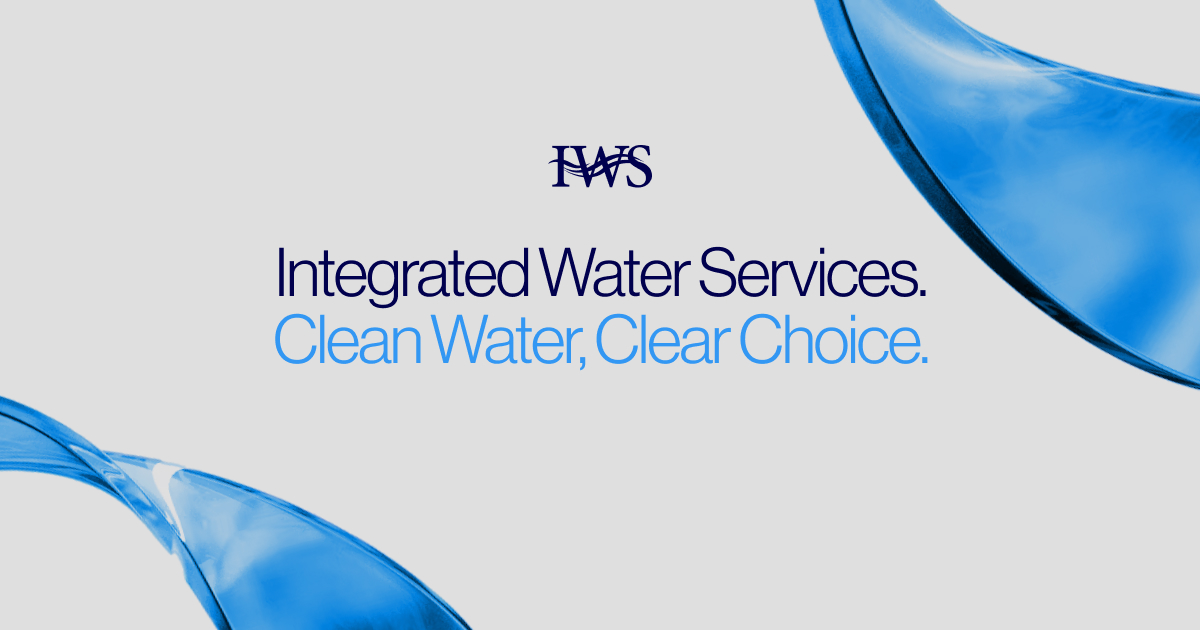How Can MBR Technology Improve Your Wastewater Treatment Operation?

Membrane bioreactor (MBR) technology offers an advanced approach to wastewater treatment that combines traditional biological treatment with membrane filtration for greater efficiency. No matter how your facility manages its wastewater and effluent now, an MBR system installation will provide a competitive advantage.
MBR wastewater treatment systems integrate a perm-selective membrane (hollow fiber or flat sheet, for example, with varying sizes of particle filtration, such as microfiltration or ultrafiltration) into a biological process such as a suspended growth bioreactor. During filtration at the end of the treatment process, the MBR system removes organic and suspended solids in wastewater at a more efficient and thorough rate than traditional processes.
Guided by increasingly stringent discharge standards across industries and a new emphasis on circular economy models, MBR systems have emerged as a powerful tool serving wastewater treatment needs. MBR technology emerged in the late 1990s and early 2000s as a reliable option; an early integration saw MBR technology implemented at a golf course in Oregon. From there, the applications flourished. Because MBR technology can be integrated into traditional wastewater treatment systems, flexibility allows for capabilities customized to meet each customer’s needs.
This technology is now used extensively in industrial wastewater treatment and municipal wastewater treatment plants, such as:
- Food and beverage
- Pharmaceutical
- Oil and gas
- Residential and commercial development
- Small- and mid-sized municipalities
How Does MBR Technology Work?
From an engineering standpoint, MBR systems refine the traditional model (an activated sludge process in most cases) by integrating a membrane assembly into the back half of the wastewater treatment process. By subbing out the settlement tank and layering in a specific filtration method (among many membrane options to choose from), the MBR system enhances the quality of the treated water, whatever the end use may be. It’s the inclusion of membranes following the equalization tank phase that elevates the level of organic and suspended solids removal efficiency.
For engineers, understanding the specific capabilities of different membrane types, as well as their pore sizes and operational parameters (such as flux rates and membrane fouling control) is crucial for successful implementation. Regular membrane replacement is incredibly important to maintain efficiency and prevent membrane fouling, as this ensures consistent, high-quality treated water output.
An MBR treatment plant or unit can be scaled according to the required flow rate for a given project, and includes essential components such as:
- The headworks screen, which removes larger debris
- The equalization tank, which regulates flow variations
- The treatment basin, which houses the membrane unit
Along the way to the treatment basin, an MBR system will run wastewater through sludge processing areas and various effluent discharge setups. Engineers will work with their MBR system partner to draw up a custom plan that will meet their needs. Those components can also be delivered as modular units, providing great flexibility within the wastewater treatment solution.
BluBox units, for example, can be customized and set up as a turnkey solution to specific engineering requirements. These encompass factors like flow rates, nutrient load, anticipated future developments, local environmental regulations, site-specific conditions, effluent discharge standards, and budget considerations.
The Key Elements of an MBR System
While MBR systems can vary somewhat by application, the fundamentals are always in place. It helps to think backward: Your end uses will dictate how you develop a plan with your MBR partner to accommodate these various elements.
Membrane Modules – The heart and soul of the MBR system, membrane modules house specialized membranes that separate solids, microorganisms, and contaminants from treated water.
Membrane – Within the membrane modules are the membranes themselves. Some systems, such as BluBox, are membrane-agnostic, so the question of which membrane to use will be an important conversation between engineers and directors of a given project. Your MBR system partner can assist with this decision.
Biological Treatment Tank – Prior to the membrane filtration, the biological treatment tank is where microorganisms break down and metabolize organic pollutants in the wastewater. This tank is associated with traditional methods of wastewater treatment, as well (not exclusively MBR).
Aeration System – Following biological treatment, but before the membrane filtration phase, a wastewater treatment process’s aeration system provides oxygen to microorganisms, promoting metabolic activity and aiding in the breakdown of organic matter.
Controls – MBR systems come complete with controls and automation elements, which allow project managers to monitor water flow rates, dissolved oxygen levels, membrane integrity, and more, allowing for real-time adjustments to optimize treatment performance. Controlled automation is a competitive edge in some respects, but more and more it’s becoming standard for complex processes like wastewater treatment.
Effluent Collection or Discharge – Effluent quality coming out of an MBR system is superior to other biological treatment options, such as conventional activated sludge. This cleaner effluent allows for reuse applications when needed (or safe discharge elsewhere).
Sludge Management – The sludge that emerges as a byproduct of the biological treatment process must be managed and, more than likely, disposed properly. This management process is subject to local/state regulations.
Assessing Your Own MBR Needs and Applications
Is MBR right for your business? It’s a basic question, but it’s important and it provides your team a chance to scrutinize your own wastewater treatment capacities against a backdrop of encroaching regulations, emerging technologies, and growth opportunities.
MBR technology is used in various applications, including municipal wastewater treatment plants, industrial wastewater treatment for food and beverage, pharmaceutical, and oil and gas sectors, as well as residential and commercial developments.
Here are some facets of the decision-making process to consider.
Regulatory Compliance Analysis – Thoroughly review your local/state/federal wastewater regulations and effluent quality standards. Identify the specific regulatory requirements that must be met, including permissible limits for key parameters such as turbidity, total suspended solids (TSS), biochemical oxygen demand (BOD), chemical oxygen demand (COD), and nutrient levels. You’ll likely find a membrane and an MBR system that can help you stay within the lines on those issues right away.
Wastewater Characterization – What are you treating, anyway? Conduct a comprehensive analysis of the wastewater to be treated if you haven’t already, and use detail-rich analytical techniques, including mass spectrometry, gas chromatography, and particle size distribution analysis, to characterize the wastewater’s composition. Include high-level data on chemical constituents, suspended solids, organic matter, and contaminants.
Flow Rate Variability – Implement controlled and automated flow rate monitoring systems equipped with high-precision sensors and real-time data acquisition capabilities. Time series analyses and stochastic modeling will help you characterize and analyze flow rate variability, which may tell you a lot about what sort of membrane you’ll want to use. Conduct detailed peak load analysis to identify extreme flow rate events and their potential impact on the MBR system; you want to be prepared for whatever your MBR system will need to handle in the future.
Treatment Objectives – What are your goals, not only with your wastewater treatment process itself but with your resulting effluent? You may want to reuse that water for facility cleaning needs; you may discharge that effluent into a stream or sewer. Design the MBR system to be scalable and adaptable to accommodate increased loads or changing influent conditions (as well as evolving regulations!) while using those objectives to inform your purchases and/or upgrades.
Modularity Needs – Assess your current wastewater treatment needs and potential future growth. If your team anticipates changes in wastewater volume or composition over time, modularity can be crucial. Modular systems can be expanded or downsized more easily compared to fixed systems, allowing for scalability. The question of modularity leads us to one more idea…
The Matter of Urgency – If your business finds itself in the position of needing a wastewater treatment solution fast (perhaps due to a natural disaster or a local chemical spill that is out of your control), get in touch today. BluBox may be the answer to your MBR questions.
Additional Insights on MBR Technology
MBR technology in wastewater treatment offers environmental benefits, such as higher efficiency in contaminant removal and the production of high-quality effluent suitable for reuse, which lessens environmental impact.
The quality of treated effluent is significant in wastewater treatment as it determines suitability for reuse applications, compliance with discharge regulations, and overall environmental impact. MBR systems provide superior effluent quality.
FAQ Section
How do MBR systems enhance water reuse capabilities?
MBR systems enhance water reuse capabilities by producing high-quality treated effluent that can be safely reused for non-potable applications or discharged into water bodies. This supports sustainability and conservation efforts.
What are the challenges associated with conventional wastewater treatment systems?
Conventional wastewater treatment systems often struggle to efficiently remove suspended and organic solids, meet stringent discharge standards, and handle variable flow rates and wastewater compositions, challenges that MBR systems address effectively.
What is membrane technology, and how is it applied in MBR systems?
Membrane technology involves using specialized membranes to filter out contaminants from wastewater. In MBR systems, membrane technology is applied in the final phase of the treatment process. This enhances the removal of solids and improves effluent quality.
What role does an aeration system play in an MBR wastewater treatment plant?
The aeration system in an MBR wastewater treatment plant provides oxygen to microorganisms during the biological treatment phase, which promotes the breakdown of organic pollutants and enhances overall treatment efficiency.
Want to learn more?
Read some of our recent articles:
- CHECKLIST: How to Conduct an ESG Audit on Your Wastewater Treatment Capabilities
- Harnessing Wastewater Reuse and Recycling: Driving ESG Progress in the Food and Beverage Industry
- Navigating Evolving Wastewater Regulations in the Food and Beverage Industry
- Advanced Wastewater Treatment Technologies in the Food & Beverage Industry
- Modular Wastewater Treatment: Fueling Sustainability in Food & Beverage
Or start a conversation with our MBR Wastewater Treatment Experts:
Want to learn more? Read some of our similar articles:
Sign up for the Integrated Water Services newsletter.
We share important perspectives and news on MBR wastewater treatment every two weeks.

